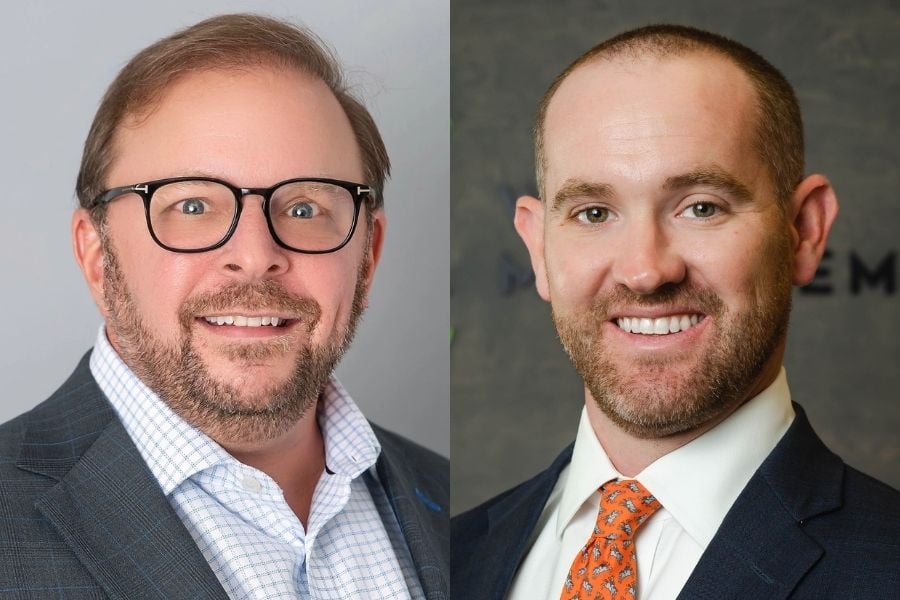

Even on Wall Street, there's such a thing as too much of a good thing. And that goes double when it comes to stock ownership across a client’s portfolio.
With an estimated 3,000 ETFs available in the U.S., stock overlap simply can't be prevented. For example, even if a financial advisor tried to pair an S&P 500 growth ETF with an S&P 500 value ETF, there would be exposure to many of the same companies in both funds.
Not to mention a pretty high correlation between the two. The correlation between, say, the Vanguard Growth Index Fund (VUG) and the Vanguard Value Index Fund (VTV) is a fairly lofty 0.81, begging the question of whether a client needs to hold both.
Throw a sector ETF or two into a client’s portfolio and the duplication really starts to add up.
“When we are meeting with a new client, we always put their portfolio into Morningstar workstation to see their ‘stock intersection’ report,” said Scott Bishop, certified financial planner at Presidio Wealth Planners. “This report shows which stocks are held in which ETFs or funds, plus whatever they may own directly in a long position. By using that Morningstar Intersection report, we can [use direct indexing to] remove funds that are just duplicating the same holdings and keep the ones we like more.”
That said, Bishop doesn't mind overweighting a stock or sector he likes for a brief period, even if he has to trim it later. However, that trimming results in taxes, which is why with larger after-tax accounts, he prefers to utilize separately managed accounts or direct indexing solutions.
Jon Swanburg, president of TSA Wealth Management, is also a fan of using direct indexing to avoid overlap or minimize exposures to certain companies or sectors.
“Investors simply looking to increase exposure to some sectors rather than others need to understand the general allocation of their core ETF holdings and adjust the satellite positions accordingly,” Swanburg said.
It’s worth noting though that SMAs have detractors, too.
Kevin Ellis, president of Envision Financial, stopped used them after he found they "neglected the huge tax disadvantage of nondeductible management fees."
"SMA manager fees are completely nondeductible under current law,” Ellison said. “Conversely, the management fees of mutual funds and ETFs reduce taxable yield distributed to investors, so they are fully utilized for tax purposes. That's why for taxable accounts, I’ll take an ETF or mutual fund over SMA any day.”
Of course, ETF providers aren't going to stop rolling out new funds simply because the market may seem oversaturated. It’s their job to find market-beating strategies, wrap them up in an ETF, and let advisors sort out the potential overlap problem.
For example, Will Rhind, CEO of GraniteShares, recently introduced the Nasdaq Select Disruptors ETF (DRUP), a portfolio of 50 of the most disruptive companies based on a proprietary scoring system that measures a company’s patent portfolio and research and development margins.
The top holding in the fund currently is Microsoft, a stock found in most large-cap index, technology and growth funds. For the record, Microsoft makes up 6.5% of the SPDR S&P 500 ETF Trust (SPY).
“There are a lot of ETFs for tech and there are a lot of ETFs for the innovation, but there's not an ETF for disruption in and of itself,” Rhind said. “And so there is no factor for disruption and that's what we tried to do is create the mechanism here to allow people to have a curated portfolio of all 50 of the top disruptive names in an ETF.”

Chasing productivity is one thing, but when you're cutting corners, missing details, and making mistakes, it's time to take a step back.

It is not clear how many employees will be affected, but none of the private partnership’s 20,000 financial advisors will see their jobs at risk.

The historic summer sitting saw a roughly two-thirds pass rate, with most CFP hopefuls falling in the under-40 age group.

"The greed and deception of this Ponzi scheme has resulted in the same way they have throughout history," said Daniel Brubaker, U.S. Postal Inspection Service inspector in charge.

Elsewhere, an advisor formerly with a Commonwealth affiliate firm is launching her own independent practice with an Osaic OSJ.
Stan Gregor, Chairman & CEO of Summit Financial Holdings, explores how RIAs can meet growing demand for family office-style services among mass affluent clients through tax-first planning, technology, and collaboration—positioning firms for long-term success
Chris Vizzi, Co-Founder & Partner of South Coast Investment Advisors, LLC, shares how 2025 estate tax changes—$13.99M per person—offer more than tax savings. Learn how to pass on purpose, values, and vision to unite generations and give wealth lasting meaning
